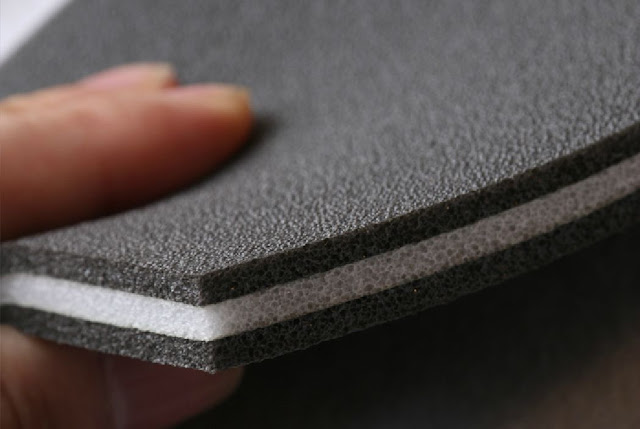The Materiovigilance Market Will Grow At Highest Pace Owing To Rise In Outsourcing Activities
 |
| Materiovigilance Market |
The materiovigilance market deals with monitoring of medical devices and implant materials post marketing. Key medical devices monitored include pacemakers, implantable cardioverter-defibrillators (ICDs), orthopedic implants, breast implants, intraocular lenses, and dental materials. Effective monitoring helps identify any unexpected adverse reaction to these devices and materials, and if required, appropriate corrective actions can be taken. The global demand for medical devices and materials is increasing rapidly due to growing aging population and chronic disease burden. At the same time, adequate monitoring of these devices post marketing is critical to ensure patient safety. This has driven increased outsourcing of materiovigilance activities to specialized third party providers.
The Global materiovigilance Market is estimated to be valued at US$ 89.09 Bn in 2024 and is expected to
exhibit a CAGR of 14% over the
forecast period 2024 to 2031.
Key Takeaways
Key players operating in the materiovigilance are IQVIA Holdings Inc., Optum,
Inc. (a subsidiary of UnitedHealth Group), Cerner Corporation, Flatiron Health,
Inc. (a subsidiary of Roche), IBM Corporation, Tempus Labs Inc., Syneos Health
Inc., Evidera, Inc., Palantir Technologies Inc., SAS Institute Inc. These
players are focusing on offering comprehensive materiovigilance solutions and
services to medical device manufacturers. For instance, in 2021 Syneos Health
Inc. launched its enhanced Syneos Life Materiovigilance
Market solutions to help clients optimize safety processes.
The growing demand for medical devices and implants across major regions is
driving the need for effective post marketing monitoring. As per estimates,
cardiovascular device sales reached US$ 60 Bn in 2020 globally and are expected
to grow at a CAGR of 7-8% through 2025. Similarly, demand for orthopedic
devices and implants is growing substantially driven by growing geriatric
population suffering from osteoarthritis and other joint disorders.
Advancements in artificial intelligence and big data analytics are helping
improve efficiency of materiovigilance processes. Use of algorithms and
predictive modeling helps identify critical device failure patterns and adverse
events faster. Integration of medical device registries with electronic health
records also improves signal detection for unexpected issues.
Market Trends
Increased outsourcing: Growing regulatory pressures and costs of in-house
materiovigilance drives increased outsourcing to specialist third party
providers. By 2024, over 65% of activities are expected to be handled by
outsourcing.
Emergence of new technologies: Adoption of AI, machine learning and big data
helps improve signal detection capabilities, risk prioritization and timely
decision making in materiovigilance. Automation of routine tasks also enhances
efficiency.
Market Opportunities
Developing markets: Emerging countries in Asia Pacific and Latin America are
expected to see rising sales of medical devices and implants. This drives the
need for investment in local materiovigilance infrastructure and outsourcing.
Integrated solutions: Integrated materiovigilance platforms offering regulatory
submission management, signal detection, case processing and risk management
functions present significant opportunities.
Impact of COVID-19 on Materiovigilance
Market Growth
The COVID-19 pandemic has significantly impacted the growth of the
materiovigilance market. Due to the lockdowns imposed worldwide during initial
phases, the clinical trials and drug development activities slowed down
remarkably. Further, the focus of healthcare resources shifted towards
treatment of COVID affected patients. This drastically reduced the number of
reported adverse events and product complaints during this period. With the
resumption of routine healthcare services post lockdowns, the volume of adverse
event reporting is expected to increase significantly. The data backlogs are
also anticipated to be cleared, providing a higher number of cases for analysis
in materiovigilance systems.
Moreover, the pandemic has accelerated the digital transformation of
healthcare. Telemedicine, remote patient monitoring, and decentralized clinical
trials have gained widespread acceptance. This provides an opportunity to
materiovigilance providers to adapt their solutions as per the evolving
healthcare landscape and ensure patient safety in the new normal. Going
forward, advanced technologies like artificial intelligence and machine
learning would play a crucial role in processing huge volumes of health data
and detecting potential safety signals faster. Pharmaceutical companies are
also emphasizing on innovative trial designs and real-world evidence generation
to fast track their product development amid the pandemic. Overall, COVID-19
has posed short term challenges but created long term expansion prospects for
the materiovigilance market.
Geographical Regions with Highest
Materiovigilance Market Value
The materiovigilance market in terms of value is highly concentrated in
developed regions like North America and Europe. Stringent regulations
regarding patient safety and pharmacovigilance in the US and EU countries drive
higher adoption of specialized materiovigilance software and services. North
America alone accounts for over 40% of the global market revenue owing to
presence of top pharmaceutical players and advanced healthcare IT
infrastructure. Meanwhile, Asia Pacific is identified as the fastest growing
regional market assisted by increasing investments of international players and
growing medical device industry in countries like China, India and Japan.
Fastest Growing Regional Market for
Materiovigilance
Asia Pacific region is expected to witness the fastest growth in the
materiovigilance market during the forecast period. This can be attributed to
expanding healthcare infrastructure, rapid economic development and rising
investments by global commercial sponsors for clinical trials in Asia Pacific
countries. China, India and other Association of Southeast Asian Nations
(ASEAN) countries have emerged as popular medical device and drug development
hubs. Further, the medical devices sector in Asia Pacific is growing at a
double-digit CAGR. This expanding regional industry coupled with improving
regulatory guidelines would stimulate materiovigilance practices and demand for
relevant software solutions across Asia Pacific.
Get
more insights on Materiovigilance
Market



Comments
Post a Comment